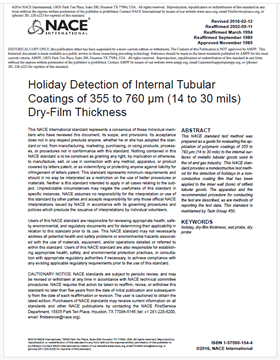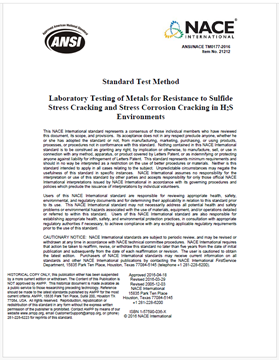Search
TM0177-HD1996-SG Laboratory Testing of Metals for Resistance to Specific Forms of Environmental Cracking in H2S Environments-HD1996
Also Purchased
NACE TM0186-2016, Holiday Detection of Internal Tubular Coatings of 355 to 760 μm (14 to 30 mils) Dry-Film Thickness
Product Number:
21218-SG
Publication Date:
2016
$179.00
NACE TM0177-2016, Laboratory Testing of Metals for Resistance to Sulfide Stress Cracking and Stress Corrosion Cracking in H2S Environments
Product Number:
21212-SG
Publication Date:
2016
$179.00
NACE TM0183-2018, Evaluation of Internal Plastic Coatings for Corrosion Control of Tubular Goods in an Aqueous Flowing Environment
Product Number:
21213-SG
Publication Date:
2018
$109.00




